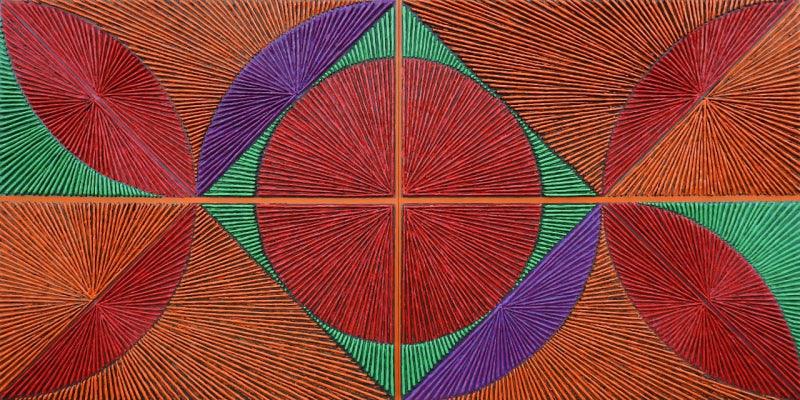Acrylic paint was introduced in the early 20th century. It is a versatile and flexible medium that revolutionized fine art. It is made up of pigments suspended in a polymer acrylic emulsion. When wet, it's water-soluble but when dried, it becomes water-resistant. Acrylics are popular among artists of all disciplines because they have fast-drying qualities, vibrant colors and durability.
History and Development
Acrylic paint was developed in 1930, but wasn't widely available until the 1950s. It was initially marketed by Bocour Artists Colors under the name "Magna", but soon became popular due to its versatility and wide range of applications. Acrylics are a great alternative to oil paints that can take several days to dry. They allow artists to experiment with texture and layering more easily.
Composition and Properties
The three components of acrylic paint are pigment, binder and vehicle. The pigment is the primary colorant, while the acrylic polymer binder holds the pigments together and adheres to the surface of the painting. Water acts as a carrier for the paint. Acrylics can be modified by adding acrylic gels, pastes and mediums or by thinning them with water.
Uses of Fine Art
-
Traditional Paint
Acrylics can be used to paint on paper, canvas and other surfaces. The medium is flexible, allowing for watercolor-like washes as well as thick impasto textures. Quick drying is especially beneficial for techniques that involve multiple layers. This allows artists to quickly build depth and detail.
-
Mixed Media
Acrylic paint can be used with a variety of materials, making it a popular choice for mixed media. Acrylic paint can be combined with collage, ink, pastels, or charcoal. Acrylic mediums are also used to create textures and effects such as high-gloss or crackle surfaces.
-
Murals, Large-Scale Works
Acrylics are popular for large-scale murals and public art due to their durability and resistance against fading. Acrylics adhere to many surfaces including wood, metal and walls. They are therefore suitable for indoor and outdoor projects. Acrylic paints are more resistant to weather than other mediums and can last longer.
-
Acrylic Pouring
Acrylic pouring involves the application of fluid acrylic paint to a surface in order to produce abstract marbling effects. Pouring mediums are used by artists to increase paint fluidity, without altering its color or adhesion properties. This method is popular because it's unpredictable and produces unique organic patterns.
-
Printmaking
Acrylic paints can be used for a variety of printmaking techniques such as monoprinting or screen printing. These processes benefit from their vibrant colors and quick drying times. Acrylic mediums are also useful for modifying the texture of the paint and its drying time. This allows you to have more control over your final print.
-
Airbrushing
Acrylic paints, when thinned properly, can be used for airbrushing. This technique involves spraying paint onto a wall to create gradients that are smooth and detailed. Acrylics are preferred for airbrushing because they dry quickly and can be cleaned with water.
-
Decorative Art
Acrylics are used widely in decorative arts such as crafts, furniture painting and home décor. They are ideal for personalizing and customizing items due to their versatility and range of colors. They stick well to a variety of surfaces such as plastic, glass, fabric and wood.
Acrylic Paint: It's a Good Idea!
- Fast drying time: This allows quick layering, and reduces waiting between applications.
- Versatility Acrylics are able to mimic both the properties and effects of oil and watercolour paints.
- Durability Acrylics, once dry, are less likely to crack or yellow over time than oils.
- Non Toxicity: Oil paints emit more fumes and are toxic. Acrylic paints have less fumes. This makes them safer to use for artists.
- Ease Of Use: Acrylics are easily cleaned when wet with soap and water, simplifying the cleaning process.
The conclusion of the article is:
Acrylic paint is a medium that has been embraced by the world of fine arts for its versatility, durability and vibrant colors. The versatility of acrylic paint makes it a valuable tool for artists. It can be used to create traditional paintings, mixed-media pieces, murals or decorative art. Acrylic mediums and additives are constantly being developed to increase the creativity of artists.










